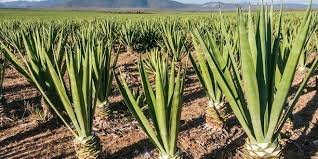New regulations set to revive fibre industry, create jobs and markets for sector players
By Benson Ltamely
Farmers and Kenyans in the cotton and sisal industries are set to benefit from markets and jobs creation once new regulations contained in a proposed law, Draft Crops (Fibre Crops and Crop Fibres) Regulations, 2025, are operationalised.
The new regulations contained in the draft law proposed by Agriculture and Livestock Development Cabinet Secretary (CS), Mutahi Kagwe, seek to streamline production, processing and marketing of fibre crops while promoting value addition, imports regulation and strengthening competitiveness in both local and global markets.
Appearing before the National Assembly Committee on Delegated Legislation yesterday, CS Kagwe touted the regulations as pivotal in unlocking the full potential of fibre crops and ensuring sustainable growth of the fibre industry.
“Under the Bottom-Up Economic Transformation Agenda (BETA), cotton is targeted to contribute significantly to poverty reduction, job creation, and economic growth. The fibre crops sector can transform communities if we provide the right legal and institutional support,” CS Kagwe said.
This, however, comes amid fears of job losses for about 400 textile workers, whose contacts expired on August 30,2025, at Rivatex East Africa in Eldoret who failed to secure a renewal of their contracts as a result of a government-backed restructuring plan that would see the company handed over to a private investor for a 21-year period.
Currently, Kenya grows cotton and sisal in 21 and 11 counties respectively with other crops such as jute, flax, kenaf, banana, pineapple, rice and coconut also presenting fibre potential.
In 2024, cotton growing in Kenya covered a total area of 16,477 hectares which translated to a total of 11,268 bales of lint against a national demand of 48,000 bales of lint. This left the country dependent on cotton imports from Uganda and Tanzania.
With large estates and smallholder farmers producing over 30,000 metric tonnes of sisal fibre in 2024 and 95% exported, Kenya ranked as the crop’s third-largest global producer after Brazil and Tanzania.
However, the CS noted that the sector is weighed down by challenges including competition from synthetic fibres, aging technology, weak farmer organizations, low financing and influx of cheap imports.



